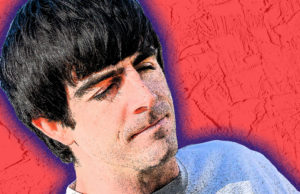Disgust, fear, surprise, anger, lies.
The face is a canvas of microexpressions, twitches
and “tells” that sweep across a visage in tenths of a second unveiling
everything in a person’s heart. And if Rockstar Games, the maker of
Grand Theft Auto and Red Dead Redemption, has its way, it will also be
the future of gaming.
For more than half a decade Team Bondi has been
quietly working with Rockstar in its Australian studio to create an
experience that could reinvent the way we play games.
traditional Rockstar video games. You will be able to explore a
meticulously rendered city, gun in hand, searching for your own
experiences, your own game-defining moments. But shooting a gun/driving
a car/adventuring won’t be the game’s central mechanic.
Instead, players will be asked to interview suspects
and decide, based on an extra blink of an eye, a nervous swallow, the
bite of a lip, whether a person is lying.
“We always knew, when we wanted to go down this
route and make a detective game, that the key part was getting the
witness in the room,” said Team Bondi head
Rockstar’s
the team even played around with the idea of forgoing the subtleties of
the interview for something more Grand Theft Auto, the idea of beating
a confession out of a suspect.
“But we realized it was actually way more
interesting to watch the performance and see if the suspect is lying or
telling the truth,” he said.
But conventional hand animation wasn’t going to convey the emotions the team wanted to in the game.
Nevertheless, Team Bondi kept working on the game,
researching the noir 1940s setting and the art of reading faces. It
even began development, creating a game of essentially headless actors,
dummies with lines of dialog and working interactions but no faces.
“It was working as a sort of text adventure for 18 months or longer before we started shooting it,” McNamara said.
The team would tell Rockstar to imagine people in
the game. It wasn’t until the team stumbled upon a new sort of
technology used for high-definition motion capture from MotionScan that
things came together.
The team brought in a middle-aged actor and sat him
down in front of an array of 32 cameras, all pointed at his face, and
had him work his way through the scene.
McNamara calls the moment he saw the results an epiphany.
The results were so realistic the team had to unlock
the game’s camera so people could move it around, just to be sure it
wasn’t really just a movie.
“It looked like the most realistic thing we’ve ever seen,” Barrera said.
It captured every facial tic, every little motion on
the actor’s face, allowing the performance to come through the game in
a way never seen before.
And it’s not just delivered as an extra layer of graphics in L.A. Noire, it is core to the experience.
In the game, due out on the PS3 and Xbox 360 this spring, players will take on the role of a detective in the
The game will be laid out much like episodes of
popular cop shows, like “Law & Order,” with players having to
investigate crime scenes for clues and interview suspects. Eventually
players will use not only the evidence they find, but their ability to
read a face, to call out a suspect and prove they’re the criminal.
The game will deliver more than 40 hours of play.
Barrera likens it to about two full television seasons of a show. And
while each case is self-contained, there will also be an over-arching
storyline that players can follow as well, he said.
L.A. Noire is more detective thriller than adventure
game, a bit of a departure for Rockstar games, but Barrera says it is a
good fit for the studio.
“Bully, The Warriors, Table Tennis, we are a pretty diverse group,” he said. “We like to do things we enjoy making.”
He also thinks that players will initially be as
confounded with L.A. Noire as they were with Grand Theft Auto 3, a game
that famously unleashed players from the typical linear experience of
gaming, allowing them to do whatever they want to do.
“When we were originally going around to people with
Grand Theft Auto 3 it was going over people’s heads,” he said. “I think
we are delivering the same sort of thing with this. We’re trying to
push the medium forward. This is strange interesting stuff and I’m glad
we’re doing it.”
It is a huge risk though, perhaps the biggest a studio built on risk has ever taken.
Will gamers be willing to put down the gun, even
occasionally, for the more subtle route of investigation and
interrogation? Will people be as attracted to a game that asks them to
slowly guide a suspect into a verbal trap, rather than allowing them to
beat a criminal into submission?
While both McNamara and Barrera acknowledge the risk, they both think it will pay off.
“There is a huge audience for these type of games,”
McNamara said. “We brought in all of this new stuff: Reading people and
dealing with people. It’s very fresh. The first five minutes most
people sort of sit there gawking at it.
“It’s a pretty revolutionary game.”
And successful or not, it’s clear the ability to
deliver an actor’s full, true performance into a video game will have a
lasting impact on the medium.
“We are trying to do something new here,” Barrera
said. “We don’t know if it’s going to be successful or not, but I think
for the industry it’s going to be a very important game.”
———
(c) 2010, Kotaku.com (Gawker Media).
Distributed by McClatchy-Tribune Information Services.














